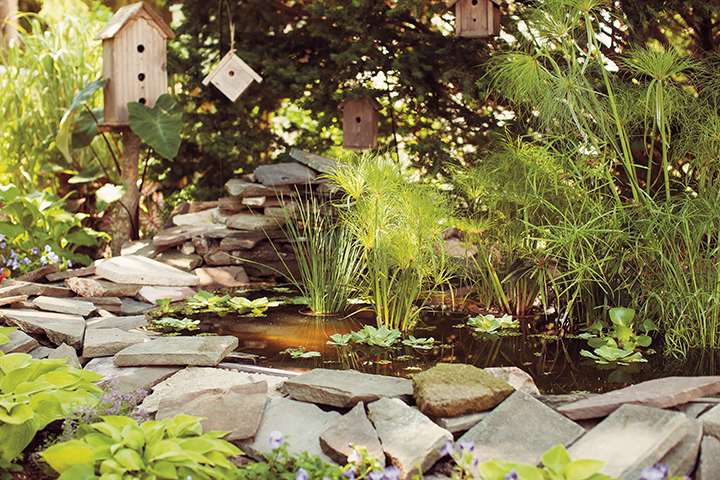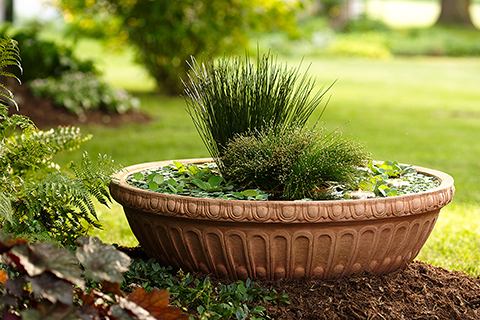
GRACEFUL GRASSES® PRINCE TUT™ CYPERUS IN WATER GARDENS

Let’s Go For a Swim!
That’s right, your favorite thriller plant for your patio planters is also a water plant! In fact, historically, papyrus was customarily considered aquatic rather than terrestrial until modern times when newer cultivars were well-adapted to both conditions. Now, it is used to add height, movement and flair to pond plantings, rain gardens, landscapes and the water’s edge.
CARING FOR YOUR WATER GARDEN
If you have a sunny pond or water feature, try adding Prince Tut papyrus as a whimsical focal point. Follow the tips below to get the best performance from your plants.
